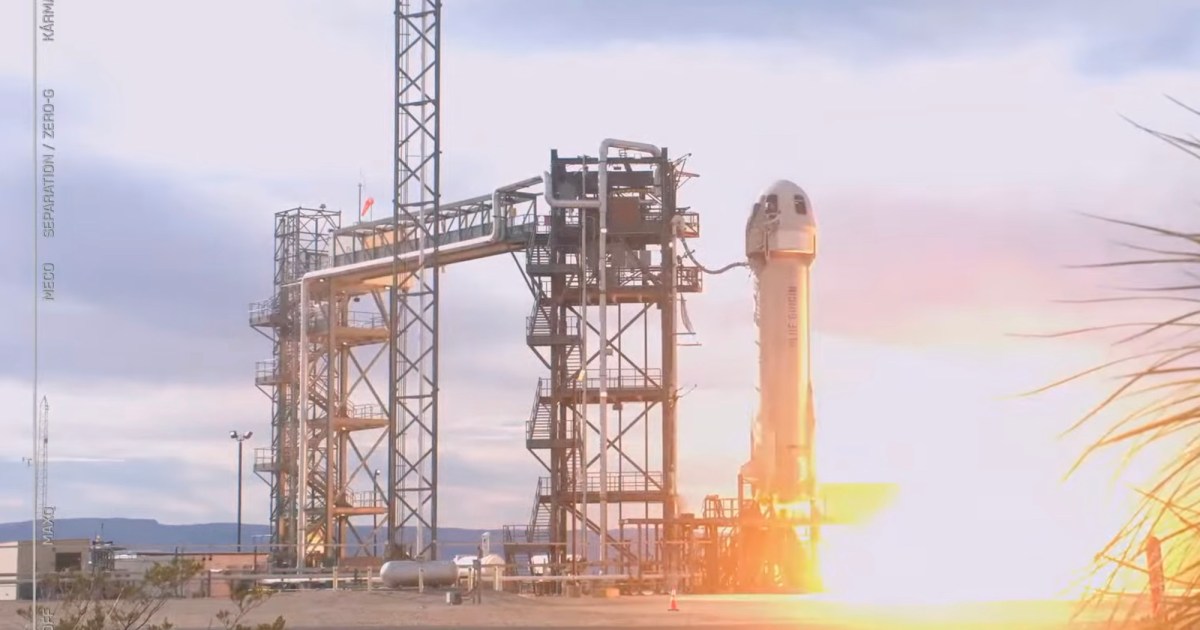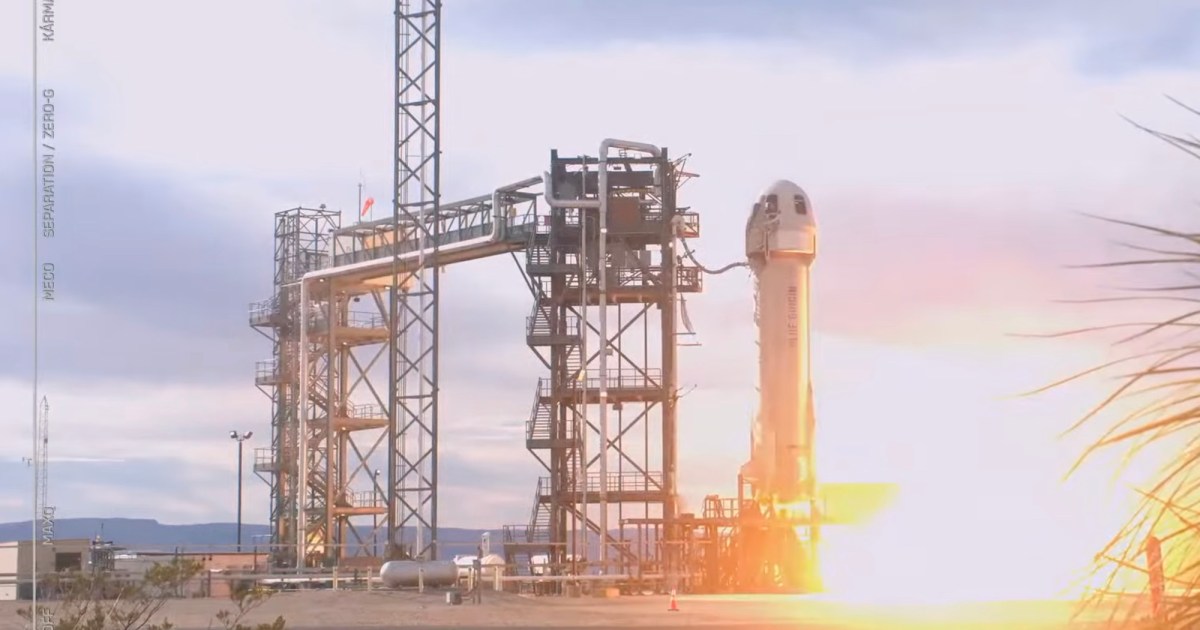
Blue Origin sent its suborbital rocket to the edge of space and back in its first flight since a 2022 midair explosion grounded its operation.
The single-stage suborbital rocket, called New Shepard, lifted off at 10:42 a.m. local time from Blue Origin’s launch facility in West Texas.
As planned, the rocket flew to the edge of space before releasing the uncrewed capsule from the top of the vehicle. The booster then returned to Earth and made a successful upright landing, paving the way for its reuse.
The capsule reached an altitude of 347,601 feet (about 65 miles), three miles beyond the Kármán line, the place generally regarded as where space begins. It then spent several minutes in a weightless environment high above Earth before touching down in the West Texas desert in a parachute-assisted landing.
The mission, which included 33 science and research payloads, lasted 10 minutes and 13 seconds.
Soon after touchdown, the Blue Origin team posted a message on social media, saying: “That’s a wrap … Thank you to our customers who flew important science today to advance our future of living and working in space to benefit Earth. We can’t wait to see what your science unfolds.”
That’s a wrap for #NS24. Thank you to our customers who flew important science today to advance our future of living and working in space to benefit Earth. We can’t wait to see what your science unfolds. ✨ pic.twitter.com/7fR2bl6BWb
— Blue Origin (@blueorigin) December 19, 2023
The successful voyage is an important one for Blue Origin as it takes it a step closer to resuming tourism rides to the edge of space.
The spaceflight company, owned by Amazon founder Jeff Bezos, had been using the New Shepard for the rides, conducting six successful flights between July 2021 and August 2022.
But in September 2022, an anomaly at 27,800 feet caused the vehicle to suddenly explode.
Fortunately no one was on board, though had they been, they would’ve been saved by the capsule’s emergency escape system, which functioned as designed, automatically separating the capsule from the booster, which then returned to Earth in a parachute-assisted landing.
An investigation into the failed flight revealed that a nozzle on the rocket’s engine suffered a “structural fatigue failure.” Corrective measures taken by engineers included redesigning the engine’s combustion chamber and adjusting some of its operating parameters.
“Demand for New Shepard flights continues to grow and we’re looking forward to increasing our flight cadence in 2024,” Blue Origin’s Phil Joyce said following Tuesday’s successful mission.
Editors’ Recommendations
Services Marketplace – Listings, Bookings & Reviews
